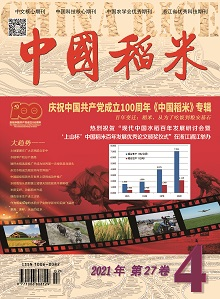Rice processing in China started in the period when wild rice was collected on a large-scale. At first, the processing technology of making rice directly from paddy was adopted. Later, the processing technology of making paddy into brown rice, brown rice and then making rice was adopted. The two constitute the ancient rice processing technology that has been used for thousands of years. Beginning in the 1860s, paddy cleaning and white rice finishing were added to form modern rice processing technology. At the end of the 20th century, modern rice processing technology were formed when of paddy grading, impurity finishing, husk finishing, by-product finishing, brown rice thickness grading, white rice length grading, white rice color sorting and white rice polishing were added. Since the beginning of the 21st century, new processes have been added, such as re-husking paddy purification, brown rice purification, combination of white rice brushing and polishing, multi-step color sorting and germ-left rice kernel separating, which constitute the contemporary rice processing technology. In the future, the rice processing technology will be more accurate and intelligent, low crushing, low energy consumption and environmentally friendly by increasing the patent processing techniques such as multi grade rice co production, multi grade rice co production and embryo rice co production etc.

